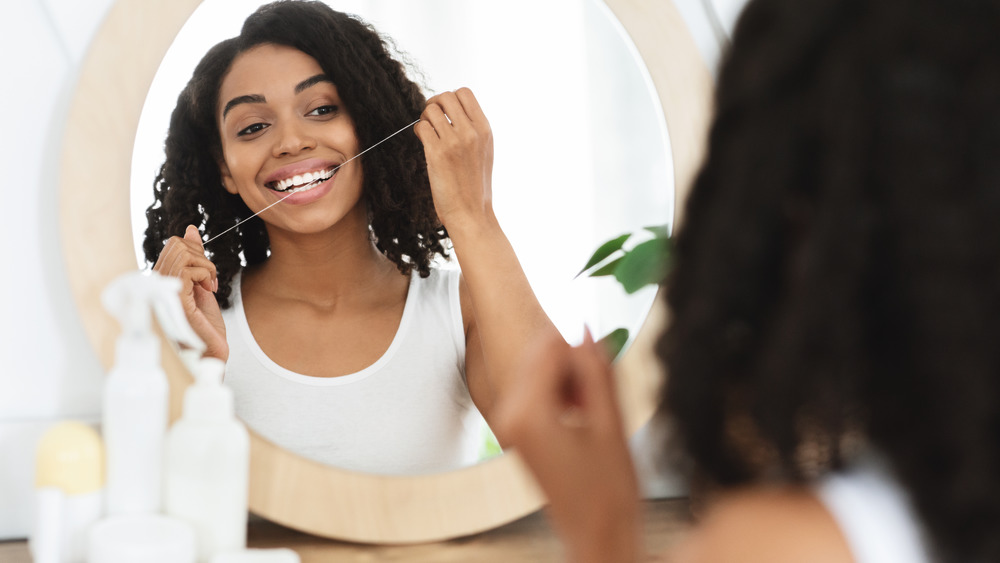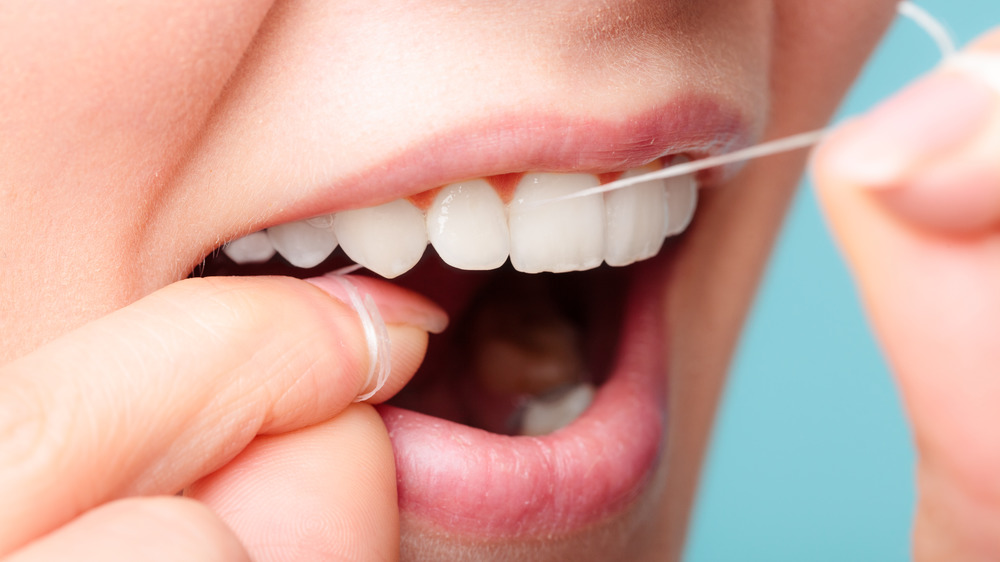Here's How Often You Really Need To Floss
Flossing may not be the most enjoyable activity, but it's necessary to maintain good oral hygiene and overall health. The American Dental Association (ADA) recommends brushing your teeth twice a day and flossing once a day. Flossing involves cleaning between your teeth with an interdental cleaner, such as dental floss or an alternative like dental picks or water flossers.
Flossing is important because brushing alone doesn't remove plaque, a sticky film harboring bacteria, from between your teeth. The bacteria in plaque feed on sugar and leftover food pieces in your mouth, releasing an acid that can cause cavities. Plaque that hasn't been removed can build up and eventually harden to form tartar, a rough substance that collects along the gum line and can cause gum disease. Severe periodontal, or gum, disease has been linked to a number of other health issues, including heart disease, diabetes, dementia, rheumatoid arthritis, and premature birth (via WebMD).
According to the ADA, it does not matter what time of day you floss, as long as you do it. Whether it's the morning, before bed, or some time in the middle of the day, choose a time where you know you will have a couple of minutes to focus on your oral hygiene. In terms of brushing or flossing first, a 2018 study published in the Journal of Periodontology concluded that flossing before brushing is preferred to reduce plaque. However, the ADA says "either way is acceptable as long as you do a thorough job."
How to floss properly
To get started flossing, break off about 18 inches of dental floss and wind one end around your middle finger and the other around the opposite middle finger (via Mayo Clinic). Hold about an inch of the floss tightly between your thumbs and forefingers and guide it between your teeth, one at a time, in a rubbing up-and-down motion. Go at it gently and make sure not to snap the floss into your gums. Always use fresh floss as you continue through your mouth.
If you have trouble using traditional dental floss, there are alternative interdental cleaners, such as dental picks, pre-threaded flossers, tiny brushes that reach between teeth, powered air or water flossers, and wooden plaque removers. Talk to your dentist about which method may be best for you. Refrain from using your fingernails or household objects like forks, knives, safety pins, or folded paper or cards to remove food from in between your teeth, as these are less effective than floss and can harm your gums.


